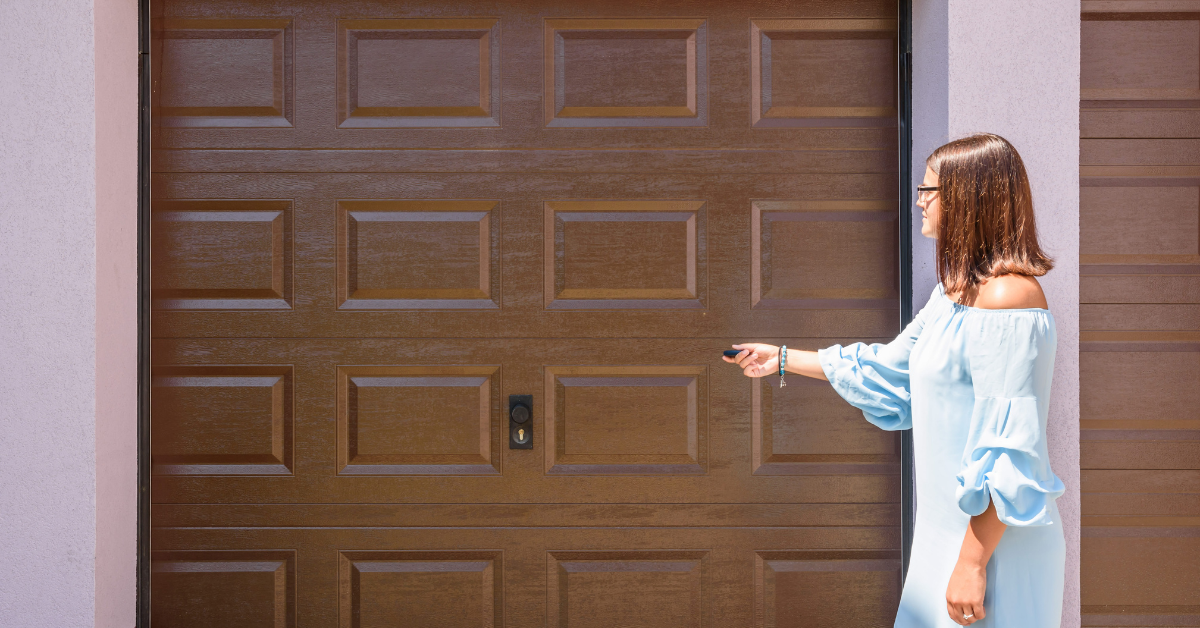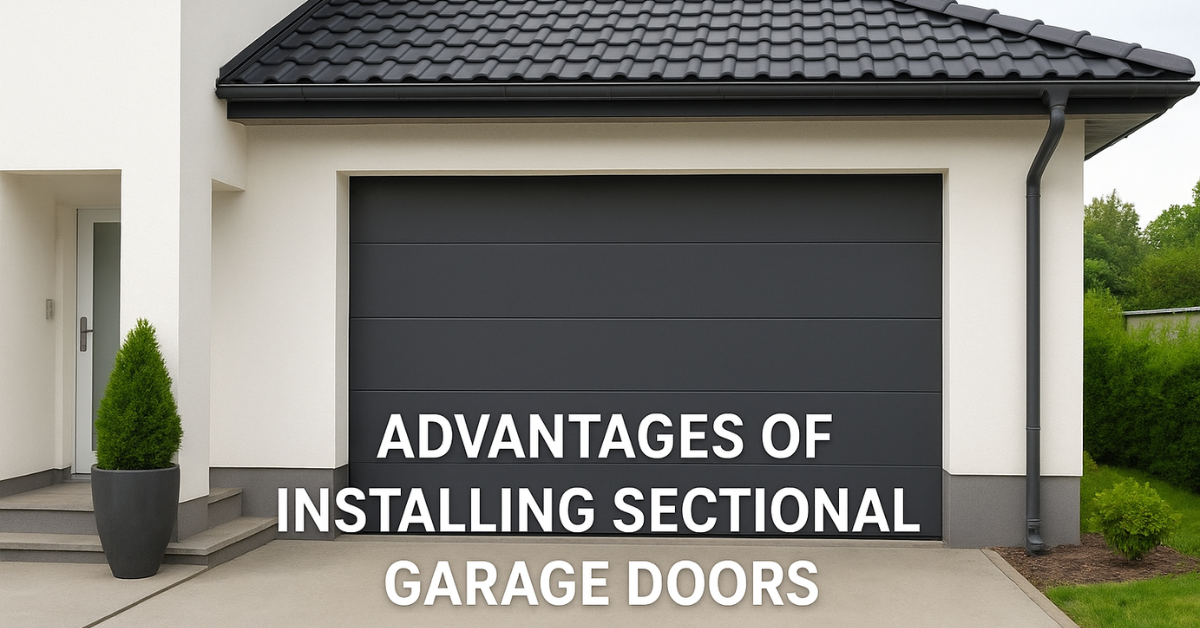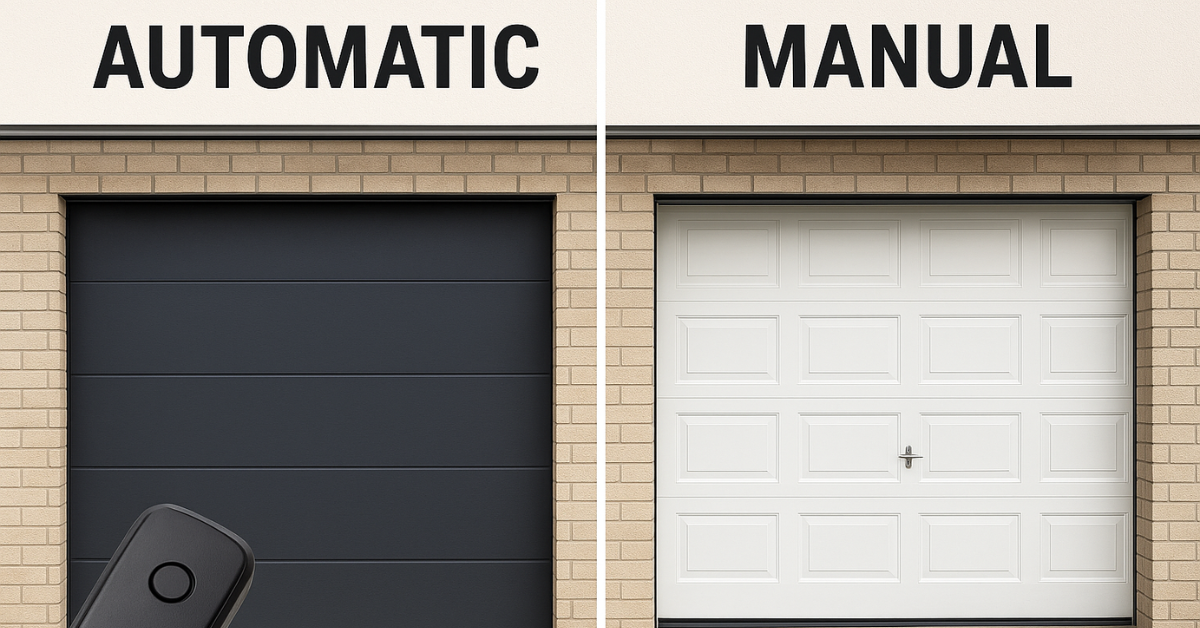Top Signs Your Garage Door Needs Immediate Repair
A garage door serves as more than just an entryway for your car. It's a critical part of your home's security and functionality. When your garage door operates smoothly, it enhances your daily life by providing convenience and peace of mind.
However, garage doors, like any mechanical system, can encounter issues over time. Ignoring these problems or failing to recognize them early can lead to significant expenses and disruptions to your routine. We will investigate the many reasons why it is important for your home to have a garage door that works properly. We'll also discuss how identifying signs of garage door problems in their early stages can save you from costly repairs and potential safety hazards. So, let's explore the significance of a reliable garage door and how to keep it in optimal condition.
Visual Inspection
Regularly looking at your garage door is like giving it a check-up. Just as you'd visit a doctor to catch health issues early, inspecting your garage door can help you spot problems before they get worse.
Cracks and Damage: When you check for cracks or damage, think of it like inspecting your car for dents. Garage doors can get banged up too. Look closely at the door's surface. Are there any visible cracks, holes, or dents? These are like warning signs that something might be wrong. If you see them, it's time to investigate further.
Rust and Corrosion: Imagine your garage door as a suit of armor for your home. Rust and corrosion are like chinks in that armor. They weaken the door over time. Inspect the metal parts of your garage door, like the springs, tracks, and hinges. Do you see any orange or brown spots? That's rust. If you catch it early, you can stop it from spreading and causing more damage.
Bent or Misaligned Tracks: The tracks are like the rails a train runs on. They guide your garage door as it opens and closes. If they're bent or misaligned, it's like having a bumpy train ride. Check the tracks carefully. Are they perfectly straight, or do they look crooked? Even a small bend can throw off your garage door's smooth operation. If you notice any issues here, it's a sign that you need to take action.
Remember, these visual inspections can help you identify problems early, which can save you time and money on repairs down the road.
Operational Issues
Operational issues with your garage door can be indicators of underlying problems.
- Garage doors should move quietly. If they make loud, creaking, or grinding noises, it suggests something is amiss. These noises indicate parts rubbing or needing lubrication, which, if ignored, can lead to more significant issues.
- Your garage door should open and close smoothly. When it slows down, it's a warning sign. Sluggish movement often points to problems with tracks, springs, or the opener, which may require maintenance or repair.
- Your garage door should open only when you want it to. If it reverses unexpectedly, it's a concern. This issue is often linked to malfunctioning safety sensors, which play a crucial role in preventing accidents. If they're not working properly, your garage door might not respond as it should.
When your garage door exhibits these operational issues, it's akin to warning lights on a car's dashboard. They signal the need for attention. Don't disregard them; address them promptly to ensure your garage door functions smoothly and safely.
Safety Concerns
Ensuring the safety of your garage door operation is paramount, and there are two primary safety concerns to address: the auto-reverse feature and unstable movement.
Auto-Reverse Feature:
The auto-reverse feature is a critical safety mechanism designed to prevent accidents. When functioning correctly, it senses any obstruction in the door's path and immediately stops and reverses its movement. This is a vital safeguard against the door closing on people, pets, or objects, which could result in injury or damage. If your garage door's auto-reverse feature is malfunctioning, it poses a serious risk. In such cases, it's crucial to refrain from using the door until the issue is resolved. Professional garage door technicians can diagnose the problem and ensure that this essential safety feature is working as intended.
Unstable Movement:
An unstable garage door is not only a performance issue but also a significant safety concern. If your garage door wobbles, shakes, or moves unevenly as it opens or closes, it indicates an imbalance or problem with the door's components. An unstable door could suddenly fall, causing injury or damage. This is especially concerning if the door falls while someone or something is underneath it. Identifying and addressing the root cause of the instability promptly is essential for preventing accidents. Garage door professionals can assess and correct these issues, ensuring that your door operates smoothly and safely.
Weather-Related Signs
Weather conditions have a notable impact on the performance and longevity of your garage door.The seals and weatherstripping around your garage door serve a crucial role, acting as protective barriers against the elements. They are your first line of defense against rain, cold drafts, and even unwelcome pests. When these components become damaged or deteriorate over time, it's like leaving a window open during a storm.
The consequences of damaged seals can be quite problematic. Water leaks can occur, potentially causing damage to your belongings stored in the garage. Drafts may infiltrate, making the garage less energy-efficient and, in turn, increasing heating or cooling costs. To ensure your garage remains well-protected, inspect the seals and weatherstripping for tears, gaps, or signs of wear, especially following severe weather events. Promptly replacing damaged seals and weatherstripping is essential to maintain a weather-tight barrier around your garage.
Garage doors, like any mechanical system, can be affected by extreme temperatures, particularly in cold weather conditions. When it gets bitterly cold outside, it's as if your garage door is going into hibernation mode. The extreme cold can cause the lubricants within the garage door system to thicken, making the door's movement sluggish and less predictable.
A sticking or slow-moving garage door can be both inconvenient and potentially hazardous. It can delay your departure, increase wear and tear on the door's components, and pose a safety risk if the door doesn't respond as expected. To address these issues, it's advisable to use low-temperature lubricants in colder climates to prevent sticking. Also, regular maintenance, including lubrication and checking for frozen parts, can help ensure your garage door operates smoothly and reliably, even in freezing temperatures.
Warning Signs for Springs and Cables
The garage door's springs and cables play a critical role in its operation, and understanding their significance is essential for maintaining a safe and functional garage door.
Loose or Broken Springs
The springs in your garage door system are akin to the muscles that help it lift and lower smoothly. They counterbalance the door's weight, making it easy to open and close. However, when these springs become loose or, worse, break, it can create a potentially hazardous situation. Loose or broken springs can be dangerous due to the tremendous tension they're under. If one snaps, it can release this tension explosively, causing significant damage and posing a risk to anyone nearby. Identifying loose or broken springs is crucial for safety:
To identify loose springs, check if the door appears unbalanced, sags to one side, or opens unevenly. Broken springs may produce a loud, sudden noise resembling a gunshot. You may also notice a visible gap or separation in the spring. If you suspect loose or broken springs, it's imperative to refrain from using the garage door and seek professional repair immediately. These components require specialized knowledge and tools to replace safely.
Frayed or Damaged Cables
Cables in the garage door system are like the sturdy ropes that guide a ship. They're responsible for lifting and lowering the door evenly. When these cables become frayed or damaged, it can compromise the door's stability and safety.
Frayed or damaged cables can pose serious risks because they may fail to support the door's weight properly. If a cable snaps, the door could suddenly drop, potentially causing severe injury or property damage. To recognize signs of cable problems:
- Inspect the cables for any visible signs of fraying, such as loose or unraveling wires.
- Check if the door appears lopsided or operates unevenly, as this can indicate cable issues.
If you notice any frayed or damaged cables, it's vital to refrain from using the garage door and contact a professional repair service. Replacing cables is a task best left to experts who understand the complexities and safety precautions involved.
Electrical Problems
Electrical components are the nerve center of your garage door system, playing a crucial role in its operation. Think of the remote control for your garage door as a magic wand that grants you access with a simple click. When it's working correctly, it adds convenience to your daily life. However, problems with the remote control can be indicative of underlying electrical issues.
Remote control malfunctions, such as unresponsiveness or sporadic operation, may suggest electrical problems within the system. These issues could range from dead batteries in the remote to signal interference or faults in the garage door opener's electrical circuitry. To address remote control problems:
- Check and replace the remote's batteries to rule out a simple issue.
- Ensure there are no sources of signal interference nearby, such as electronic devices or other wireless systems.
- If the problem persists, consult your garage door's user manual or seek professional assistance for diagnosing and resolving electrical issues.
When to Call a Professional
Knowing when to call a professional for garage door repair is vital for safety and functionality. Understanding the distinction between DIY and professional repairs is crucial. While some minor tasks like lubrication, tightening, battery replacement, and track cleaning can be handled by homeowners, it's essential to approach them cautiously. However, for complex issues like spring replacement, cable repair, electrical problems, track or roller issues, safety sensor malfunctions, or significant damage, it's highly advisable to enlist the expertise of a professional garage door repair service. Prioritizing safety and proper repair ensures efficient garage door operation while minimizing the risk of accidents.
Conclusion
Recognizing early signs of trouble with your garage door is essential for its safety and longevity. Whether it's visual issues, operational problems, safety concerns, weather-related challenges, or electrical malfunctions, addressing these promptly through regular maintenance and professional assistance when necessary ensures that your garage door continues to provide security and convenience for your home.
If you've identified any of the signs discussed in this blog post, it's essential to act promptly to ensure the safety and functionality of your garage door. For professional and reliable garage door repair services, we recommend reaching out to FIX N GO Garage Door Repair Company. Our expert technicians are equipped to address a wide range of garage door issues, ensuring that your door operates smoothly and securely. Don't wait until small problems become big headaches; contact FIX N GO Garage Door Repair Company today for expert assistance you can trust. Your garage door and your peace of mind will thank you.




